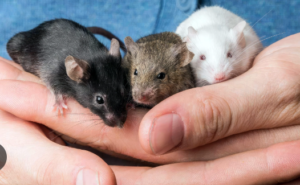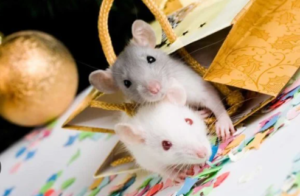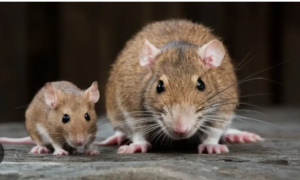Pet mice and rats are fascinating, social, and intelligent creatures that make excellent companions when properly cared for. While they are often misunderstood, these small rodents can form strong bonds with their owners and are relatively low-maintenance compared to larger pets. However, caring for them requires attention to detail and a commitment to ensuring their well-being. This comprehensive guide covers everything you need to know about keeping your pet mice and rats happy and healthy.
You may this one also: How I Chose My Meat Rabbit Breeds
Understanding Mice and Rats as Pets

Before diving into care specifics, it’s important to understand the differences and similarities between mice and rats. Both are social creatures, but their personalities and care requirements differ slightly:
- Mice are smaller, more delicate, and often shy. They are best kept in groups of the same sex to avoid loneliness.
- Rats are larger, highly intelligent, and enjoy human interaction. They thrive in pairs or small groups, typically of the same sex.
Choosing the Right Housing for Mice and Rats

The habitat is a crucial part of ensuring your pets are comfortable and safe. Here are key considerations:
1. Cage Size and Type
- For Mice: A minimum of 10-gallon tank or wire cage is suitable for a small group of mice. Ensure there’s enough space for them to run, climb, and burrow.
- For Rats: A larger cage with multiple levels, such as a rat-specific wire cage, is ideal. Each rat needs at least 2.5 cubic feet of space.
2. Bedding
- Use aspen shavings, recycled paper bedding, or hemp bedding. Avoid cedar and pine shavings, which can release harmful aromatic oils.
- Clean the bedding weekly to prevent odor and maintain hygiene.
3. Ventilation
- Opt for wire cages over glass aquariums for better airflow, which helps prevent respiratory issues.
4. Cage Accessories
- Include wheels (solid surface to avoid tail injuries), tunnels, hammocks, and hideouts to stimulate their natural behaviors.
- For rats, adding ropes and climbing structures encourages their active nature.
Nutrition for Mice and Rats

Providing a balanced diet is key to their health and longevity.
1. Commercial Food
- Use high-quality rodent blocks or pellets as the main component of their diet. Avoid mixes with seeds, as these can lead to selective feeding.
2. Fresh Foods
Supplement their diet with fresh fruits and vegetables, such as:
- Mice: Apples (seedless), carrots, and broccoli.
- Rats: Bananas, peas, and spinach.
Avoid toxic foods like chocolate, onions, garlic, and citrus fruits (for male rats).
3. Protein and Treats
- Occasionally offer small amounts of cooked egg, chicken, or mealworms.
- Limit sugary treats to maintain their weight and dental health.
Health and Hygiene

1. Grooming
- Mice and rats groom themselves frequently, so bathing is usually unnecessary. If needed, use a damp cloth to clean dirty spots.
- Trim their nails if they become too long.
2. Common Health Issues
- Mice: Prone to respiratory infections, tumors, and mites.
- Rats: Susceptible to respiratory problems, abscesses, and obesity.
Monitor for symptoms like sneezing, lethargy, or lumps and consult a vet if needed.
3. Cleaning the Cage
Spot-clean daily and perform a deep clean weekly. Use pet-safe disinfectants to clean surfaces.
Socialization and Interaction
1. Handling Your Pets
Approach them gently and scoop them up with both hands. Avoid grabbing their tails.
Allow new pets time to adjust before handling them extensively.
2. Playtime
- Rats enjoy interactive play, like games of hide-and-seek or learning tricks.
- Mice are more content exploring their environment and interacting with cage mates.
3. Toys and Enrichment
- Provide chew toys to prevent overgrown teeth.
- Offer puzzle feeders to keep them mentally stimulated.
Breeding Considerations
If you’re not prepared for dozens of babies, avoid housing males and females together. Accidental breeding can lead to overcrowding and stress. If breeding is intentional, research extensively and ensure homes for the offspring.
Lifespan and End-of-Life Care
- Mice live about 1.5–2 years, while rats live 2–3 years.
- As they age, they may require additional care, such as softer bedding and a quieter environment.
FAQs About Pet Mice and Rats
1. Do Mice and Rats Need a Companion?
Yes, both species are social animals and thrive in groups. However, always keep them with same-sex companions to avoid unplanned breeding.
2. Can Mice and Rats Live Together?
No, they have different social structures and dietary needs, making cohabitation stressful for both.
3. Are Mice or Rats Better for Kids?
Rats are typically better for children due to their larger size, sociability, and ability to bond with humans.
Final Thoughts
Caring for pet mice and rats is a rewarding experience when you understand their unique needs. From creating a comfortable habitat to providing proper nutrition and enrichment, these small creatures can bring joy and companionship to any home. By following this guide, you’ll be well-equipped to ensure your furry friends live long, happy lives.
With the right care, pet mice and rats can thrive and become cherished members of your family. Start small, observe their behaviors, and adjust as needed to give them the best life possible.
